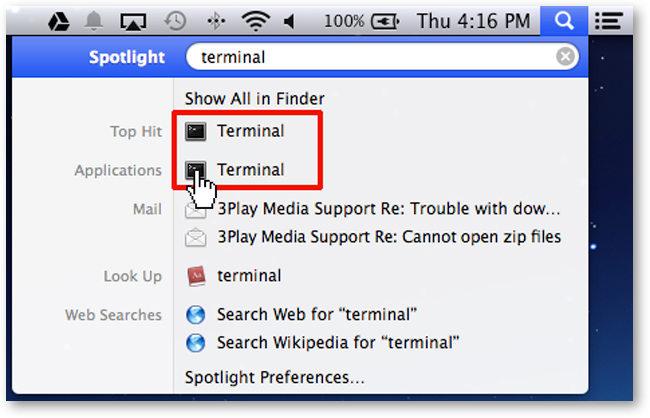

- Mac terminal find file how to#
- Mac terminal find file update#
- Mac terminal find file professional#
He is dedicated to delivering high-quality solutions and providing valuable insights to meet the unique challenges of the digital landscape. With a focus on Cybersecurity, DevOps, and AI & ML, Rakesh brings a wealth of knowledge and practical experience to his work. Additionally, he is well-versed in cloud-native, web technologies such as HTML, CSS, and JavaScript, as well as popular frameworks like Spring Boot, Vue, React, and Angular. His proficiency extends to a wide range of operating systems, including macOS, Ubuntu, Windows, CentOS, Fedora, and Arch Linux. He has a proven track record in various industries, including Banking, Finance, and Insurance. With over 18 years of practical expertise, he specializes in programming languages such as Java, Python, Sharepoint, PHP, and Rust.
Mac terminal find file professional#
Know the Author: With a Masters Degree in Computer Science, Rakesh is a highly experienced professional in the field.
Mac terminal find file update#
Mac Update Stuck Preparing macOS Ventura 13.0 About 30 minutes remaining Here’s how it works, step by step: find /Documents: Runs the Unix find command, starting in the Documents folder, and then reading all other directories at or below that level.

Mac terminal find file how to#
What is (base) in Mac Terminal Prompt and how to remove it?. Here’s how to use it: Step 1 Open Finder by clicking its icon on your Dock. In this case, the same file was found as part of an developer application installation in the User. It’s also sorted by Date Last Opened so you can easily pick up work where you left off. List All Files & Subdirectory Contents from the Command Line To list all files recursively from the command line, you can attach the -R flag to the traditional ls command. The mdfind command will locate files in your user directory, as well as those in the system. How to make EditText text to uppercase or lowercase on macOS Method 1: Scan your Recents Folder macOS makes it super easy to find files that you were recently working with or you recently created, especially if you forgot where you saved them. Go to Specific file path using Mac Finder. How to connect Airpods to Macbook Air or Pro? View text files in Terminal on Mac To look at the contents of a text-based configuration file, use cat or less. Backup your Mac before you update to macOS Ventura using Time Machine The mdfind command will locate files in your user directory, as well as those in the system. Fix Error - Another active Homebrew update process is already in progress. macOS Mail Fix: Authorization Error 400: invalid request. How to Rename a file using Mac Terminal. : Operation not permitted - Mac Terminal ZSH Error With the zsh shell (which recently became the default shell on macOS): print -rC1 myfolder//.pdf (.ND) This would print out the pathnames of all regular files in or below the directory myfolder that have names ending in. brew: command not found Mac or Linux Terminal Error. How to refresh Safari on Mac (macOS) using keyboard shortcut Once this file has been created, you may simply execute the valet use command and the command will determine the sites preferred PHP version by reading the. bash_profile File in TextEdit using Terminal How to Increase Mac Terminal Buffer Size. 30+ Zoom video communications application shortcuts for macOS. Build-in Snipping Tool Alternative on Mac.






 0 kommentar(er)
0 kommentar(er)
